The Dream of Maya in the Sculptural Art
Introduction
Dream is a series of thoughts, visions, or feelings that happen during sleep.[1] According to Buddhist legend, on a full moon night in the middle of summer, the queen Maya had a strange dream. She saw that a white elephant, bearing a white lotus in his trunk, walked round her couch and touched her right side to enter her womb. The very next day this dream was revealed to king Suddhodana and it was interpreted in his court that soon, he will have a great son. Almost after ten months, the queen Maya gave birth to Siddharth.[2] The scene of dream of Maya and its interpretation are often depicted in the Buddhist art. The main aim of this article is to study and interpret the various depiction of the dream of Maya as well as the interpretation of the dream.
Dream of Maya Devi
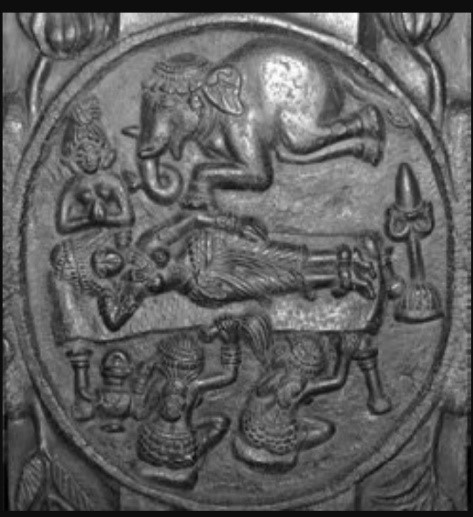
PL. 1 Bharhut
In the depiction of dream of Maya from Bharhut, dated second century Before Common Era (BCE), Maya Devi is shown lying down on a couch and a big-sized elephant approaching her from above (PL.1). Maya Devi is accompanied by female attendants. The Bharhut carving looks very flat without any suggestion of depth in the background.
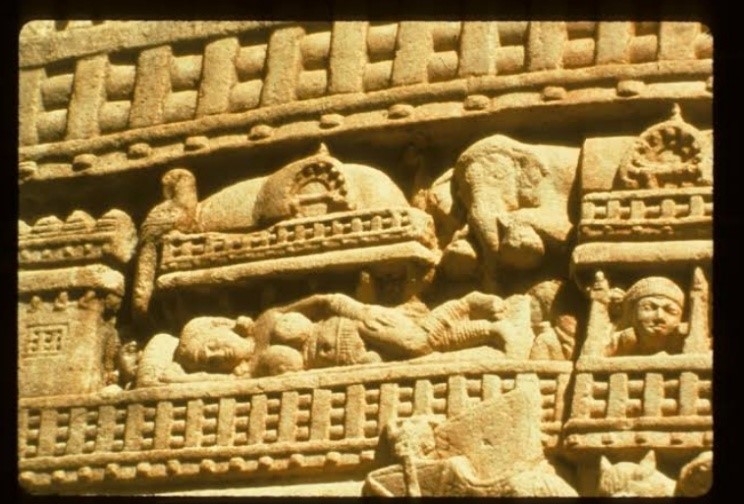
PL. 2 Sanchi
In Sanchi, the dream of Maya Devi is carved in high relief, dated first century BCE (PL.2). Maya Devi is lying on a decorated couch. No attendants are shown here. The sculptor has emphasised the decoration. A peacock sitting on the roof is adding more to the decoration of the roof. The Bodhisatta is shown in the corner and approaching Maya Devi near her feet. Thus, we see the same legend with two different representations. Therefore, the point of consideration in the narrative relief is intellectual interpretation, aesthetic visualization and execution more than the iconography itself. [3]
In the art of Andhradesa, we see the nature of change in the artistic articulation of the narration of the dream of Maya Devi. This depiction can be dated to between the second century CE and fourth century CE. From Amaravati, we have many reliefs depicting the episode of dream Maya Devi. In one sequential narrative[4] from Amaravati, the graceful Maya Devi is shown lying on the beautifully decorated couch (Pl. 3).
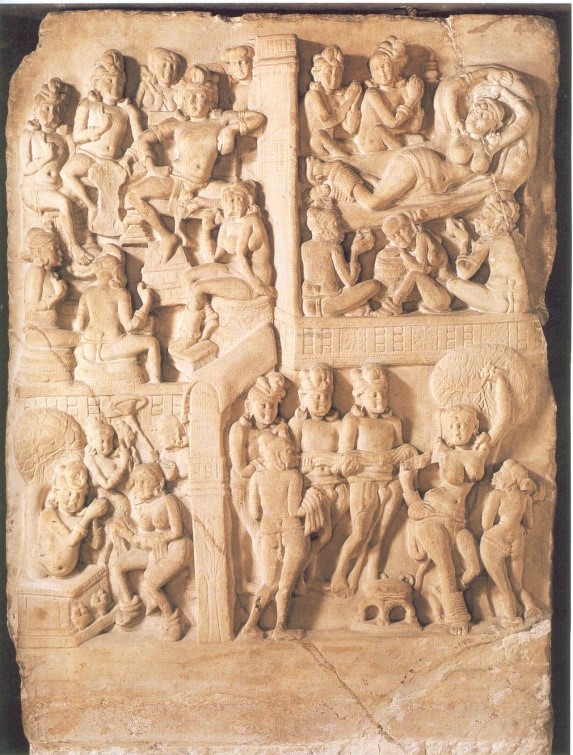
PL. 3 Amaravati
Here, we do not see the depiction of elephant. Four lokapalas are shown sitting in four corners in anjalimudra. One female attendant is drowsy. However, in the other depictions from Amaravati, we see many female attendants are shown sleeping or drowsy (Pl. 2, 3). They all are shown with heavy jewellery and different hair styles. Some other depiction from Amaravati shows a very small depiction of elephant at the border (Pl. 4).
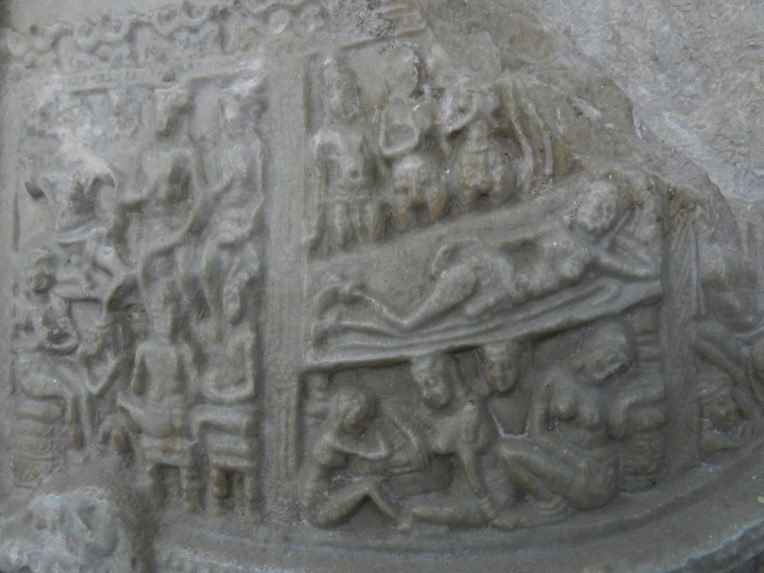
PL. 4 Amaravati
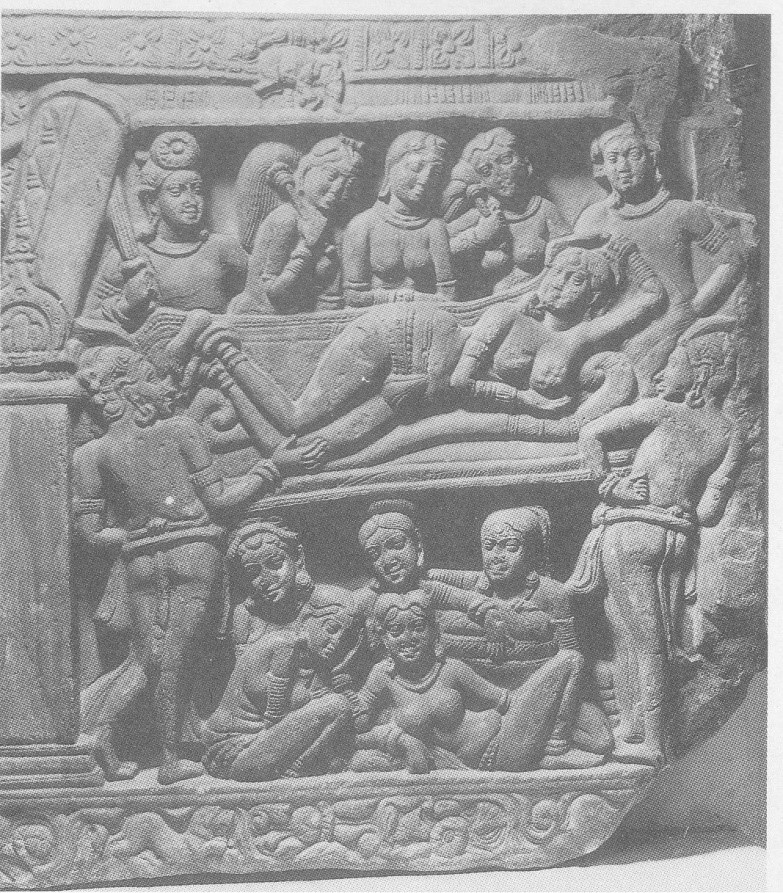
PL. 5 Amaravati
However, we also see a separate depiction of the descent of the elephant from the heaven (Pl. 8). In this depiction, the elephant is shown descending from heaven in a decorated palanquin. The palanquin is carried by the vamanas. The other celestial beings and the vidyadharas or flying gods are also shown rejoicing.
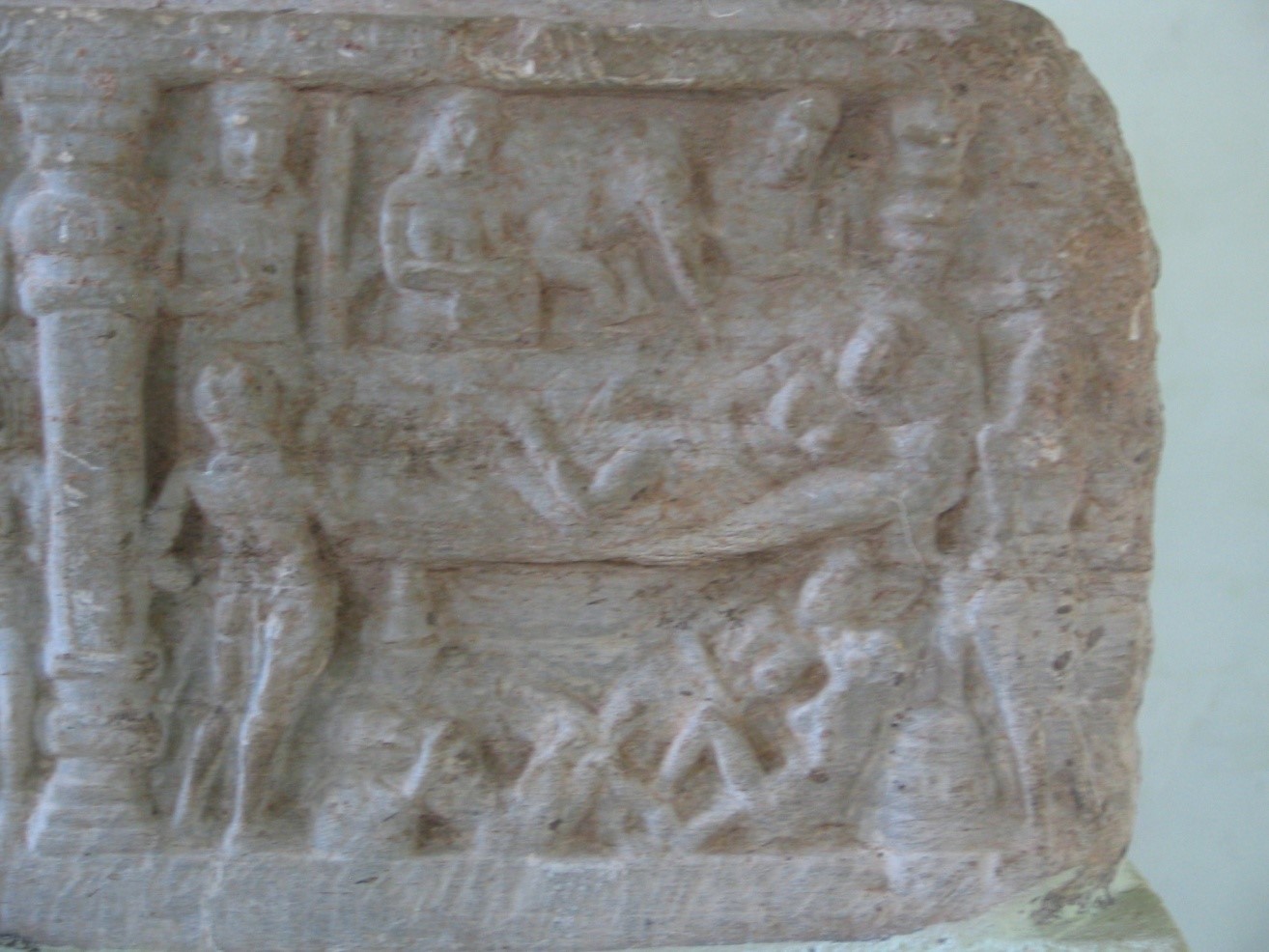
PL. 6 Ghantasala
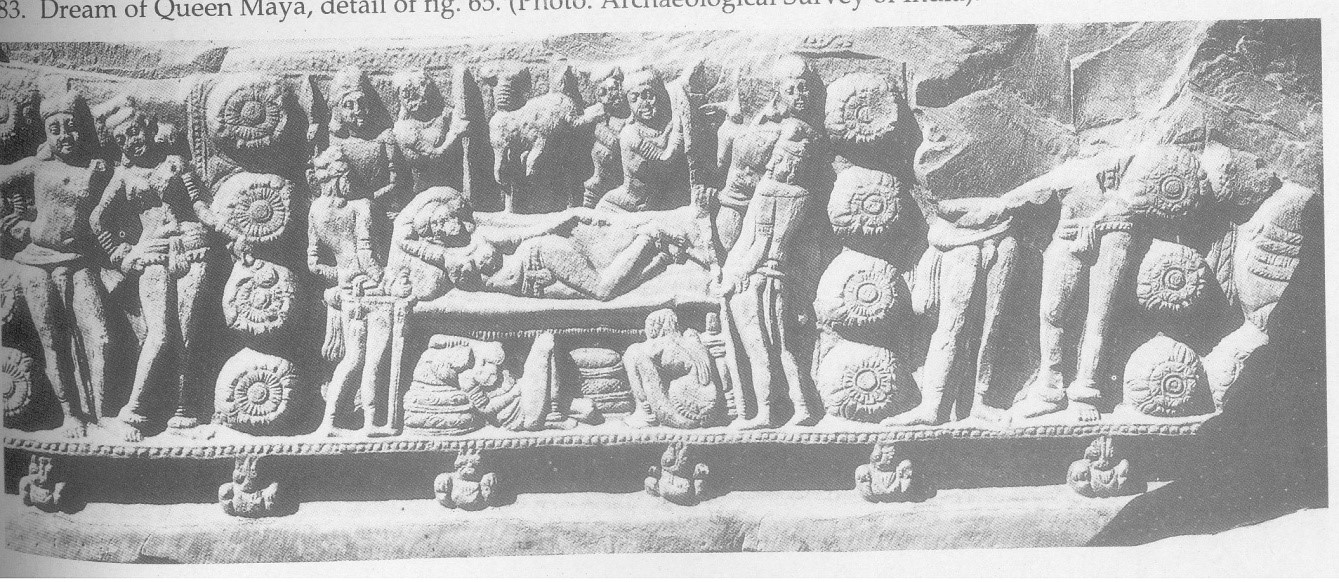
PL. 7 Nagarjunkonda
In the art of Ghantasala, we see Maya Devi lying down on the couch and the elephant entering her from the right side (Pl. 6). In one depiction from Nagarjunkonda, the elephant is shown in a palanquin right above Maya Devi’s couch (Pl. 7). The palanquin is kept very simple and no one is shown carrying it. However, the other depiction shows the grand descending of Bodhisatta in a palanquin (Pl. 8). Here, the decorated palanquin is carried by the vamanas. There are dancing and rejoicing celestial beings in anjalimudra. We see the presence of Nagaraja as well. In comparison with Amaravati, the females figures are less decorated in the depiction of Ghantasala and Nagarjunkonda.
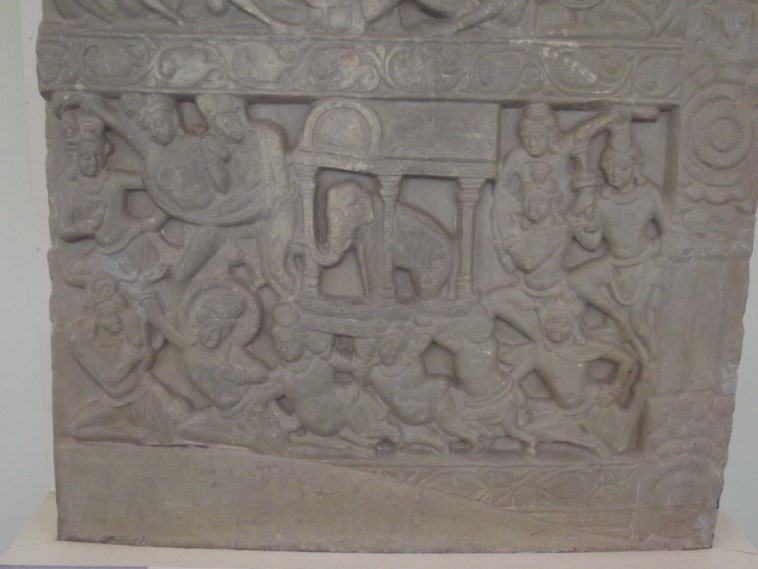
PL. 8 Nagarjunkonda
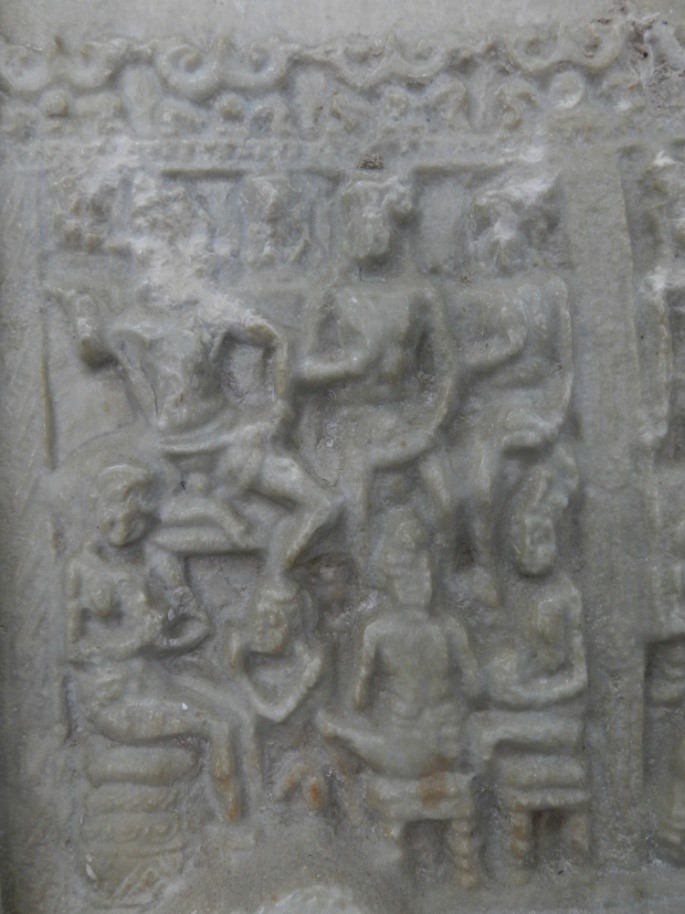
PL. 9 Amaravati
Interpretation of the Dream of Maya Devi
Shuddodhana and Maya Devi both were puzzled by the dream. They called up the scholars and wise men of that time to interpret the meaning of the dream. The wise men declared that the king and the queen will soon become parents of a great child. So, in the art, the depiction is the court scene of king Shuddodhana. We have the depiction of this theme from Amaravati and Nagarjunkonda. From Amaravati the depiction dated Second Century Common Era, the king Shuddodhana and the queen Maya Devi are sitting on throne and a high stool respectively. There are other scholars sitting on two tiered and even three tiered stools, and their hands are in vitarka mudra (gesture of discussion). Female chouri bearers are also shown with chouris. However, the third century CE depiction is much more crowded than the previous one (Pl. 9). In this coping stone remains, we see the king and the queen surrounded by many male and female attendants. Here, change is noticed in the depiction of the king and the queen as well. In this depiction, we see a parasol above the head of the king. The king is wearing a high turbaned crown and a multi-layered necklace and his magnitude is represented with his big belly. The queen is also shown with a heavy waist band, necklace, and head gear. One man standing just near the king is shown holding a covered vessel in his left hand and the right hand is in vitarka mudra. He is wearing a four-tiered turban. There is a person sitting down who looks like he is writing something, apparently recording the discussion.
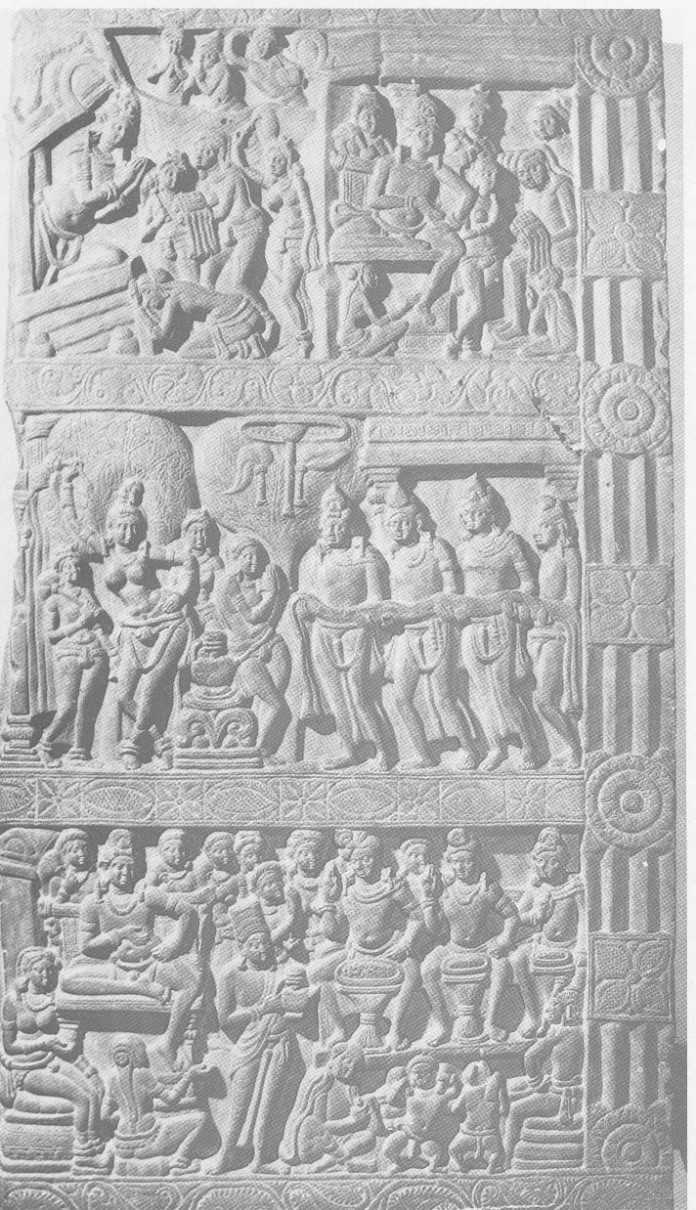
PL. 10 Nagarjunkonda
From Nagarjunkonda, we get a similar depiction, attached to the birth scenes of the Buddha. In the depiction, king Shuddodhana is shown sitting on the throne and the Queen on a stool. Queen Maya Devi is holding a jar in her hand. Other learned persons are shown sitting on the two tiered high stool. Their hands are in vitarka mudra. The main priest is standing near the king and holding a covered vessel. He is wearing multi layered turban. There are many chouri bearers with chouri standing at the back.
However, a close study of the depiction reveals that this could be the depiction of the interpretation of Queen Maya’s dream as here, we see neither the iconic depiction nor the indexical sign, i.e. footprints on the cloth, conveying the presence of the child Siddhartha, whose horoscope was to be cast. The second important thing is that the dome slab is presenting sequential narratives of the birth story of the Buddha in a vertical layout. Different episodes related to the birth story can be read from the bottom, each episode is demarcated by carved columns, which help the viewer see one after the other. The first episode is the interpretation of the strange dream of Maya Devi in the court of Shuddodhana. The central section of the panel is the depiction of birth of the Buddha in Lumbini-Vana. The third scene is divided into two sections – on the left is the presentation of the child to the Sakya clan deity Sakyavardhana and on the right is the depiction of Asita’s visit to the child.
From the above depictions, we can say that the interpretation of Maya’s dream was an important subject matter to discuss in the king’s court of Shuddodhana. The learned and the wise men were called to understand the hidden meaning behind the strange dream.
Thus, we see noticeable change at the decorative level, as well in the manner of the depiction of the theme. In Buddhist scriptures, it is said that the Bodhisatta entered into Maya’s womb from her right side. However, in the depictions of Bharhut, Sanchi and Nagarjumkonda (PL. 1, 2 & 7) the elephant is shown approaching Maya Devi from left whereas in Amaravati and Ghantasala, it is showing that Bodhisatta is coming to her from the right (Pl. 4, 5 & 6). The number of female attendants always varies from one to the other. The most essential features of Andhradesa art is the depiction of the four lokapalas at the four corners of the couch of Maya Devi, as it is not seen in either Bharhut or Sanchi. However, sometimes slight change is noticed in the depiction of the lokapalas, based on the space assigned to the theme. Major change is noticed in the depiction of the Bodhisatta in the form of elephant. The size of the elephant is very small in comparison to Bharhut and Sanchi. In some of the reliefs, the elephant did not find a place in the main depiction and it is depicted at the border, in some other depictions, it is not even seen. However, there are depictions where the descent of elephant from heaven has been given a separate space, and it is not attached to the dream of Maya Devi.
References
- https://www.britannica.com/dictionary/dream
- For the story see The Play in Full: Lalitavistara, ed. and trans. by Rinpoche Chokyi Nyima and others
- Amita Ray, Life and Art of Early Andhradesa (Delhi: Agam Kala Prakasan, 1983), pp. 140-141.
- Sequential narrative depicts successive events of an episode, or successive episodes of a story within a single frame, repeating the figure of protagonist in course of narrative. Scenes are separated from one another by a variety of compositional means, and generally each episode is contained within a separate frame. For detail see, Vidya Dehejia, Discourse in Early Buddhist Visual Narratives of India (New Delhi: Munshiram Manoharlal, 1997), pp. 20-21.